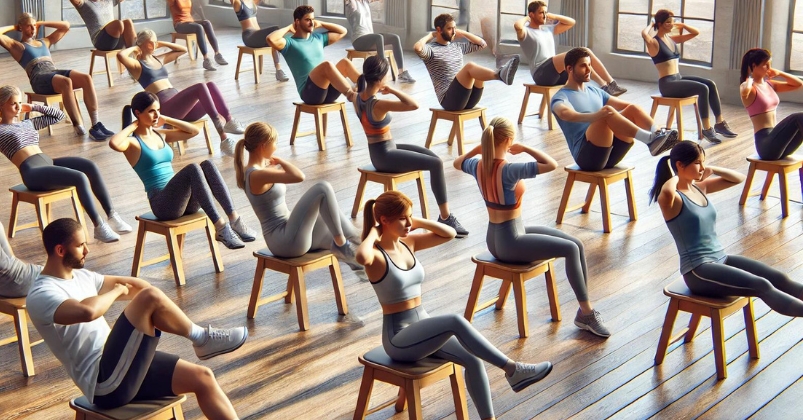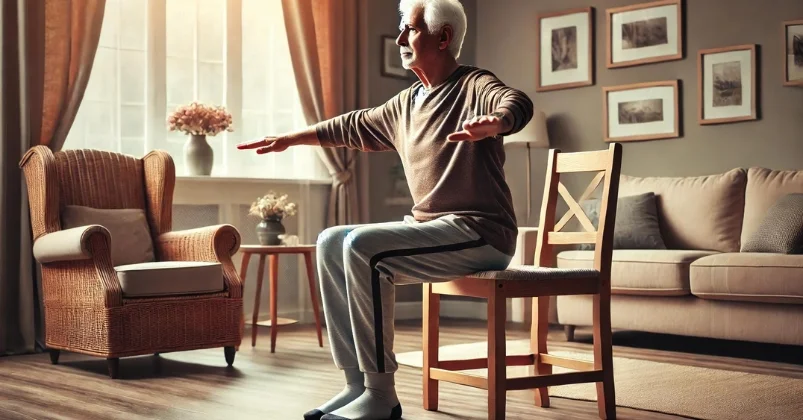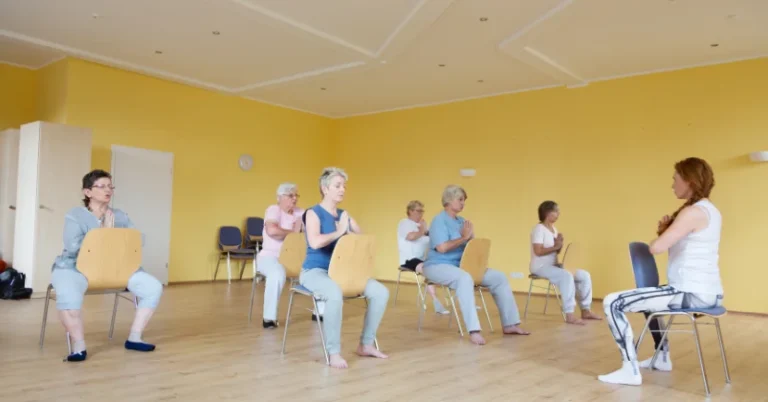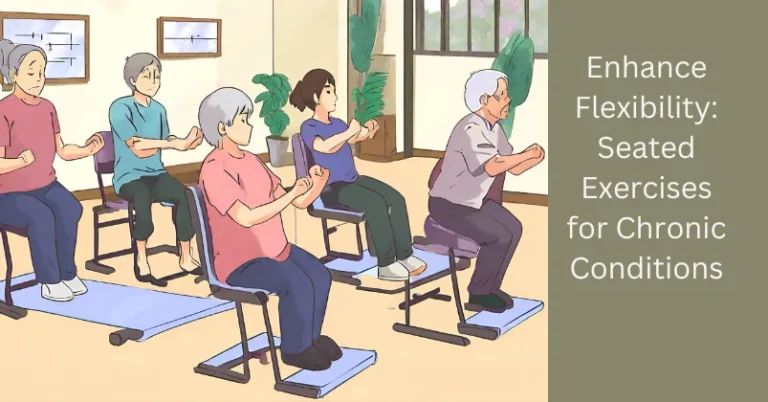Seated Balance exercises
As the foundation of our physical well-being, maintaining balance is integral not only for mobility but for ensuring a strong core and good posture.
Whether you're an elderly individual striving to maintain independence, someone with limited mobility looking to enhance physical capabilities, or just someone searching for an effective yet low-impact workout, seated balance exercises can be a game-changer.
This guide explores why balance is crucial, especially as we age, and highlights the inclusivity of seated exercises, allowing everyone to participate irrespective of their physical condition. Let’s delve into the world of seated balance exercises for an empowered and healthy lifestyle.
Why Balance is Essential as We Age
Balance, while seemingly automatic, plays a critical role in our daily lives. From walking and standing to bending over to pick something up, balance keeps us upright and reduces the risk of falls. As we age, muscle mass decreases, bones become brittle, and our response time might slow down. This makes us more prone to accidents and injuries. By prioritizing balance in our fitness routine, we can combat these natural aging processes, ensuring mobility, independence, and a higher quality of life in our golden years.
Embracing All: Inclusivity in Exercise
Every individual, regardless of age, fitness level, or physical ability, deserves the chance to exercise and improve their health. Seated balance exercises, by design, offer a platform that caters to a wide range of people.
It’s not just about the exercises but the message they send – fitness is for everyone. By introducing inclusivity in our workout regimes, we're ensuring that everyone gets an opportunity to lead a healthy, active, and fulfilling life.
Seated Balance Exercises
Seated balance exercises might sound simple, but they have the potential to significantly strengthen the core and improve posture, especially for those who might find traditional workouts challenging.
Before diving into the exercises, understanding their benefits and setting the stage for a successful session is paramount.
Benefits of Seated Balance Exercises
- Low-impact: Ideal for individuals with joint problems or arthritis.
- Accessibility: Great for people with mobility challenges or who are recovering from injuries.
- Core Strengthening: Engages the core muscles, enhancing stability and posture.
- Improves Coordination: Helps fine-tune motor skills and coordination.
Starting Right: Setting the Stage for Success
Before diving into the exercises, ensure:
- You have a sturdy chair without wheels.
- Your feet are flat on the ground, and your back is straight.
- Keep a water bottle nearby for hydration.
- Wear comfortable clothing that allows easy movement.
- Warm-up with some light stretches to prepare your body.
Types of Seated Balance Exercises
These exercises can be a great starting point to build core strength and improve balance. Remember, consistency is key!

Tummy Twists
Sitting straight, hold a small weight or even a book close to your chest. Slowly rotate your torso to the left, then back to the center, and then to the right. Ensure the movement is controlled, and your spine remains straight.
Leg Lifts and Extensions
While seated, lift one leg off the ground, keeping it bent at a 90-degree angle. Hold for a few seconds, then extend the leg straight out. Return to the starting position and repeat with the other leg.
Gentle Torso Tilts
Keeping your back straight, gently tilt your torso to the left and then to the right. This move targets the oblique muscles, aiding in better lateral balance.
Isometric Ab Holds
Sit up straight and engage your core muscles, as if you're bracing for a punch in the stomach. Hold this “tightened” position for a few seconds, then release. This helps in strengthening the deep core muscles.
Seated Marches
Lift one knee up as high as comfortable, then switch to the other. This mimics the action of marching and helps in improving lower body strength and coordination.
Enhancing Your Seated Balance Routine
Once you've got the basics down, consider amplifying your routine for added benefits.
Incorporating Weights
Adding light hand weights can increase resistance, pushing your muscles to work harder. This not only strengthens the muscles but also improves endurance.
Breathing Techniques for Better Balance
Proper breathing can enhance any workout. Inhale deeply through the nose and exhale through the mouth. This helps in oxygenating the muscles and maintaining focus.
Adjusting for Varying Fitness Levels
Listen to your body. If an exercise feels too easy, consider increasing the reps or adding weights. Conversely, if something feels too hard, reduce the reps or intensity. Remember, it's about progress, not perfection.
Safety Precautions While Exercising
Exercise is intended to improve our health, not jeopardize it. Here are safety precautions to ensure you get the most out of your seated balance exercises without any setbacks:
- Know Your Limits: Listen to your body. If you feel pain (and not just the good “burn” of a workout), stop and adjust.
- Stay Hydrated: Drink plenty of water before, during, and after your exercise routine.
- Use Appropriate Equipment: If you're incorporating weights, ensure they're of a manageable size and weight.
- Proper Form is Key: Incorrect posture or movements can lead to injuries. If unsure, consult a fitness professional or therapist.
- Warm-Up and Cool Down: Begin with a gentle warm-up to prepare your body and end with a cool down to ease out of the session.
Embracing Balance: Concluding Thoughts
Balance, posture, and core strength are crucial components of our overall physical health. Seated balance exercises provide an inclusive, low-impact, and effective way to enhance these components, making them a worthy addition to any fitness regimen.
By adopting these exercises and understanding their importance, we pave the way for better mobility, independence, and overall health, regardless of age or fitness level.
FAQs
It's ideal to incorporate them 3-4 times a week for consistency and better results.
Absolutely! They're an excellent addition to any fitness routine for core strengthening and posture improvement.
No, weights can enhance the workout but aren’t mandatory. The exercises themselves, when done consistently and with proper form, offer great benefits.
Starting with 15-20 minutes is ideal, and as you build strength and endurance, you can extend your sessions.
Certainly! Household items like filled water bottles, cans of food, or even bags of rice can serve as alternatives to weights. The key is to ensure they are of a manageable weight and can be held comfortably.
If you experience sharp pain, dizziness, or extreme discomfort while performing the exercises, it could indicate incorrect form or that the exercise is too strenuous. Always prioritize quality over quantity and ensure your movements are controlled and precise. If in doubt, consulting a fitness expert or physical therapist can provide clarity.








